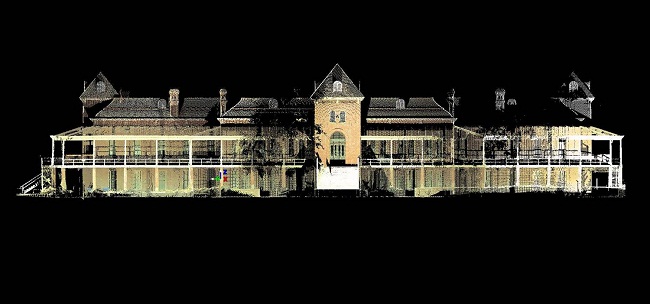
Ideally, a historic preservation and restoration project begins with an original set of drawings that depict every detail of the structure. Knowing what exists today is an important first step when stabilizing a building and returning it to the look of yesterday. But what do you do when original drawings don’t exist, as is the case with the historic Old Main building on the University of Arizona campus in Tucson? Sundt is currently immersed in a $9.5 million university construction project to stabilize the building and restore the exterior it to its original design.
Until recently, an accurate representation of the 122-year-old building would have been created the old-fashioned way: a crew of workers would have walked throughout the structure taking hundreds of photos and measurements by hand. Next would be the tedious task of generating an updated set of drawings from all of the individual measurements. Luckily, that approach has become a relic of the past, thanks to new laser technology that uses millions of points of light to create an exact, 3D representation of a building.
“Old Main was an ideal application of the latest laser scanning technology,” said Sundt Project Director Kurt Wadlington. “It provided our team with a highly accurate 3D model that was then used to produce accurate design and construction documents.”
The laser work is being performed for Sundt by Darling Geomatics. The laser beams measure angle, elevation and distance, sometimes generating 500,000 to a million measurements every second. Those images are then used to generate a precise, 3D model containing thousands of as-built data points that are accurate to within a quarter of an inch.
“Working on a historical property such as Old Main requires evaluating existing conditions and developing solutions that carefully merge the existing structure and building systems with new construction to result in the most seamless result possible,” Kurt continued. “This is normally a very labor intensive process that was made more efficient through the use of laser scanning.”
Using laser technology is just one of the ways Sundt applies cutting-edge tools to its projects. For more information about our innovative approaches to the challenging construction projects, click here.